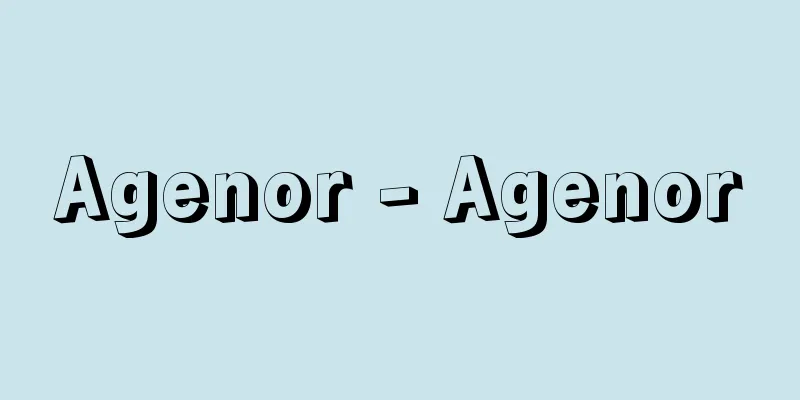A story of a morning glory

|
Joruri Gidayu-bushi. Sewamono (domestic drama). 5 stages. A posthumous manuscript by Yamada Kagashi (another name for the kabuki playwright Chikamatsu Tokuso). Edited by the head of Suishoen. First performed in January 1832 (Tenpo 3) at the Takemoto Kokudayu-za Theatre in the precincts of Inari Shrine, Osaka. In 1814 (Bunka 11), Nagawa Seisuke adapted the story Asagao Nikki (The Morning Glory Diary) by Ukoen Ryuro, which was adapted from the long story Asagao (The Morning Glory) by the lecturer Shiba Shibaso, into a kabuki script for the second Sawamura Tanosuke under the title Keisei Tsukushi no Tsumagoto, which was then made into a joruri play. Commonly known as Asagao Nikki (The Morning Glory Diary). It is also performed under the title "Ikiutsushi Asagao Nikki (A Live Asagao Diary)." Miyuki, the daughter of Akizuki Yuminosuke, a samurai of the Kishu Kishido clan, and Miyagi Asojiro fall in love with each other while out catching fireflies in Uji. Later, she refuses her marriage proposal from Komazawa Jirozaemon, not knowing that the man is Asojiro, who has changed his name to serve the Ouchi clan, and runs away from home. After a life of wandering, she becomes blind and becomes a houseguest, singing the "Asagao Song" that Miyagi once wrote. She then plays the koto at the request of a guest at the Ebisu-ya inn in Shimada, but the guest is none other than Miyagi, and she leaves without revealing her name due to an official matter. Later, Miyuki finds out that he is her lover and follows him to the Oi River, but is unable to cross due to a river barrier. In her grief, she is about to drown herself when she is saved by Tokuemon, the owner of Ebisuya, and Sekisuke, Akizuki's servant. The play is characterized by its melodramatic technique of misunderstandings, and the first act, "Fireflies Hunting," and the fourth act, "The Inn" and "The Oi River," are often performed in Kabuki. In Bunraku puppet theater, the first half of "The Inn," the "Laughing Medicine" scene, in which the quack doctor Hagino Yusen plays an active role, is famous as a comical scene. [Toshiaki Matsui] Source: Shogakukan Encyclopedia Nipponica About Encyclopedia Nipponica Information | Legend |
|
浄瑠璃義太夫節(じょうるりぎだゆうぶし)。世話物。5段。山田案山子(やまだかがし)(歌舞伎(かぶき)作者近松徳叟(とくそう)の別号)遺稿。翠松園主人校補。1832年(天保3)1月、大坂稲荷(いなり)境内の竹本木々太夫座初演。講釈師司馬芝叟(しばしそう)の長話(ながばなし)『蕣(あさがお)』を脚色した雨香園柳浪の読本(よみほん)『朝顔日記』を、1814年(文化11)奈河(ながわ)晴助が2世沢村田之助のため『けいせい筑紫(つくしのつまごと)』の題で歌舞伎脚本化、これを浄瑠璃にしたもの。通称「朝顔日記」。『生写(いきうつし)朝顔日記』の題でも上演される。芸州岸戸藩士秋月弓之助の娘深雪(みゆき)は、宇治の蛍狩りで宮城阿曽次郎(みやぎあそじろう)と互いに恋い染める。のち駒沢(こまざわ)次郎左衛門との縁談を、それが大内家に仕官して改名した阿曽次郎のこととも知らず、拒んで家出し、流浪のすえに盲目となり、かつて宮城が詠じた「朝顔の歌」を歌って門付(かどづけ)をする身になる。そして島田の宿(しゅく)の宿屋戎屋(えびすや)で客に望まれ琴を弾くが、その客こそ宮城で、公用のため名のれずに去る。あとで恋人と知った深雪は大井川まで追って行くが、川留めで渡れず、悲嘆のあまり入水(じゅすい)しようとするところを、戎屋の亭主徳右衛門(とくえもん)と秋月の僕(しもべ)関助(せきすけ)に救われる。メロドラマ的なすれ違いの手法が特色で、序段の「蛍狩り」、四段目の「宿屋」「大井川」が歌舞伎でも多く上演される。なお、人形浄瑠璃では「宿屋」の前半、藪(やぶ)医者萩野祐仙(はぎのゆうせん)が活躍する「笑い薬」の段がチャリ場(滑稽(こっけい)な場面)として有名。 [松井俊諭] 出典 小学館 日本大百科全書(ニッポニカ)日本大百科全書(ニッポニカ)について 情報 | 凡例 |
Recommend
Bessel functions - Bessel functions
In a broad sense, it refers to the solution of Bes...
Pistachio (English spelling) Pistacia vera; pistachio
A deciduous tree of the Anacardiaceae family. It i...
ACTION
…It was launched in March 1961 and was officially...
Huskisson
British politician. After working in the governmen...
promethium
Pm. Atomic number 61. Electron configuration [Xe]...
Blue Pet - Aopeto
...Its main uses are in ointments and other medic...
Tilia maximowicziana (English spelling) Tiliamaximowicziana
…[Sumihiko Hatsushima]. … *Some of the terminolog...
Camellia saluenensis (English spelling)
…[Yoshiharu Iijima]. … *Some of the terminology t...
Jugai Roku
This work was written by Edo period mathematician ...
Melanosis - English spelling
A condition in which pigmentation occurs later in ...
Monkiageha (English spelling) Red Helen
A butterfly belonging to the family Papilionidae ...
Rhina ancylostoma
…They feed on small animals such as crustaceans. ...
Southwestern Yi (English spelling)
A general term for the non-Han people who lived in...
Valenciennes (English spelling)
A city in the northern part of the Nord department...
İskenderun (English spelling)
Formerly known as Alexandreta, Alexandreta is a po...









